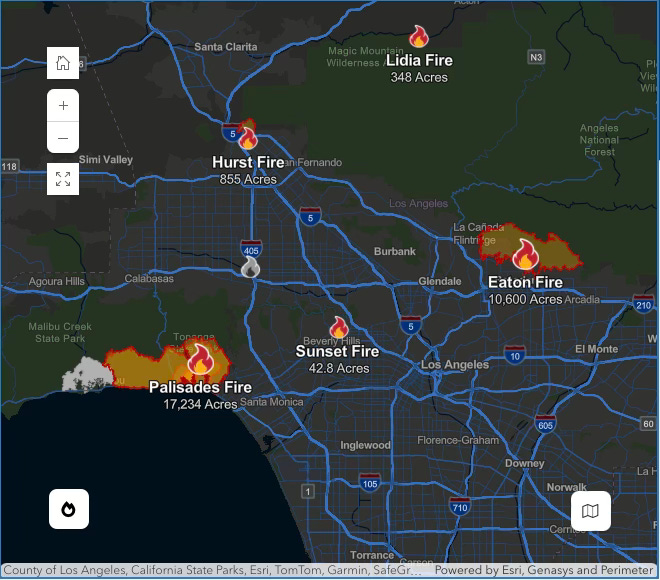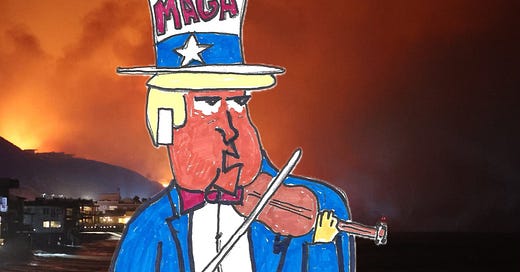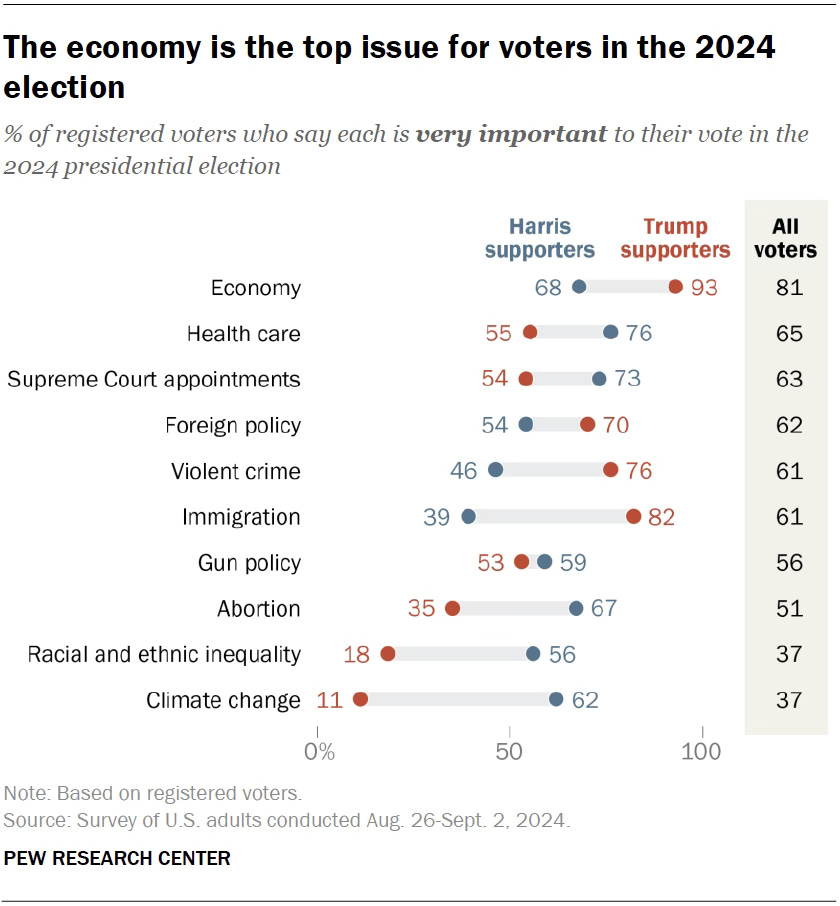Extreme weather? It’s the Climate, Stupid
We Can Fiddle -- Like Trump -- as LA Burns, or Change the Way We Live
ABC World News Tonight broadcasted from California on Wednesday, offering terrifying — “apocalyptic” is the word David Muir used — images of fire-ravaged homes and schools, of seniors being evacuated from assisted living under a smoke-darkened sky, of homeowners fleeing.
As far as TV news reports go, the ABC team deserves kudos. The report put the people of the region first and put viewers in a space in which they could, if not feel what is being felt by residents, understand in a visceral way.
It answered the main questions — what reporters call the five Ws — but failed to dig deeper into the story, to explain the “why” in a way that might help us moving forward. Yes, “weather” — a convergence of extreme weather events (drought and dangerous winds) — is the primary culprit in what are fires of unprecedented size and scope, but focusing only on these weather patterns begs an important question, one raised by Juan Cole in his important Informed Comment blog: “why has this year been so dry, creating abundant ‘fuel’ for the wildfire demons?”

He cites several reports, including this one from Matt McGrath of the BBC, from which I’m quoting at length:
High winds and lack of rain are the main factors driving the Southern California fires, but climate change is altering the background conditions, increasing the likelihood of these conflagrations, say experts.
Researchers have shown that a warming world increases the number of "fire weather" days, when conditions are more suited to outbreaks of fire.
California is particularly vulnerable right now because of a lack of rain in recent months, following a very warm summer.
This is consistent with what the National Oceanic and Atmospheric Administration, a federal agency, reports:
Climate change, including increased heat, extended drought, and a thirsty atmosphere, has been a key driver in increasing the risk and extent of wildfires in the western United States during the last two decades. Wildfires require the alignment of a number of factors, including temperature, humidity, and the lack of moisture in fuels, such as trees, shrubs, grasses, and forest debris. All these factors have strong direct or indirect ties to climate variability and climate change.
A 2016 study found climate change enhanced the drying of organic matter and doubled the number of large fires between 1984 and 2015 in the western United States. A 2021 study supported by NOAA concluded that climate change has been the main driver of the increase in fire weather in the western United States.
Drought and persistent heat set the stage for extraordinary wildfire seasons from 2020 to 2022 across many western states, with all three years far surpassing the average of 1.2 million acres burned since 2016. Extreme fire behavior during this period shocked many wildfire managers, as several huge blazes burned for months, others incinerated entire communities, and still others erupted during nighttime wind events, when firefighters could normally count on working the fire line. In the Sierras of California and the Rocky Mountains of Colorado, flame fronts threw embers over the crests of mountain divides, across miles of rocky and inflammable terrain, one more behavior never before observed by wildfire managers.
Research shows that changes in climate create warmer, drier conditions, leading to longer and more active fire seasons. Increases in temperatures and the thirst of the atmosphere due to human--caused climate change have increased aridity of forest fuels during the fire season. These drivers were found to be responsible for over half the observed decrease in the moisture content of fuels in western U.S. forests from 1979 to 2015, and the doubling of forest fire burned area over the period 1984–2015. For much of the U.S. West, projections show that an average annual 1 degree C temperature increase would increase the median burned area per year by as much as 600% in some types of forests. In the Southeastern United States modeling suggests increased fire risk and a longer fire season, with at least a 30 percent increase from 2011 in the area burned by lightning-ignited wildfire by 2060.
We are living through a climate crisis, one that we give lip service to but otherwise ignore. A survey from the Pew Research Center in September, two months before the presidential election, found that just 37% of voters (and only 11% of Republicans) cited climate change as a very important factor for their upcoming vote. It ranked lowest among the top-10 issues — despite its influence on each of the other issues.
Outgoing President Joe Biden has focused on battling the blazes and providing aid. President-elect Donald Trump, however, appears more interested in blaming Biden and California Gov. Gavin Newsom — mirroring coverage on Fox News (or is it the other way around?).
This posturing is not only selfish, but dangerous. It does nothing to ensure that California has the resources needed to extinguish the fires or provide aid to those affected and to those will be affected. Fire has been a fact of California life for much of its history, but we are witnessing an increase in both intensity and frequency as the climate has changed and extreme weather grows more common. Drought, flash floods, massive storms, unexpected snow — these have become our reality. Even as California is being ravaged by fire, other areas of the country are experiencing winter conditions they have never seen before.
This is not just an issue in the United States. If we back the lens out, and look at what is happening globally, we find these environmental issues (drought and extreme weather, resource depletion, air quality), intersecting with economic inequality, questions of war and peace, with migration, violent crime, and health care.
In the United States, Republicans — set to take control of all branches of federal government — plan to “drill, baby, drill” for more oil and to gut environmental regulations to “unleash the power of business.” And Trump, like Nero, will just fiddle as it “burns, baby, burns.”





